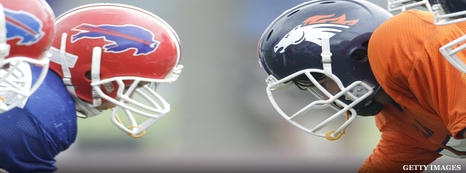
The terrifying results of a study on youth football has experts scrambling to think up new safety standards for America's most loved game.
Researchers at Purdue University have examined at brain activity in high school football players over the course of the last six seasons by placing sensors in helmets. The Toronto Globe & Mail reports the still-ongoing study shows that while big hits make families and fans cringe, it's the lighter but repetitive blows that often end up doing the most damage to the brain.
The study, published in the Journal of Neurotrama, found some football players suffering neurological injury without a single symptom to tip them off. Without any warning signs, researchers say, football players don't realize they need to get medical attention. So they continue to play and risk serious and perhaps long-term brain injury.
One possible solution: a "hit count." Purdue scientists are trying to devise a system to ensure that players who get hit in the head a certain number of times would be held out of play no matter what.
Little League Baseball made headlines in 2007 when it tried to protect youths by limiting the number of pitches a player could throw. It relied on the number of pitches thrown, rather than innings pitched, to determine how much and how long a pitcher could go in a game and how often he could pitch.
Something similar might work on the football side, but some say implementing the system would be next to impossible at the youth level. Others question what the actual definition of a hit would be.
But researchers say something must be done, and soon.
"We're pretty convinced that what we're seeing is the beginning of a path that doesn't in all cases lead to [long-term brain injury], but to some sort of neurological damage that has some potential to persist," said Thomas Talavage, a biomedical engineer on the research team.
The good news is that following a week of rest, the kids' brains showed a large amount of healing.
A girls' soccer team and a second football team has been added to the research this season.




